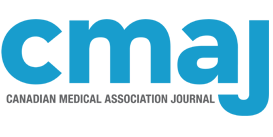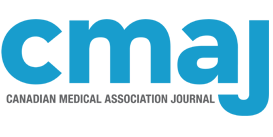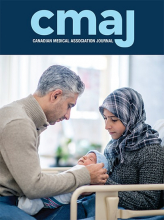Gendered Islamophobia is prevalent in Canada and is premised on the stereotype that Muslim women are powerless victims of their religious tradition.
Visibly identifiable Muslim women in health care professions are affected by gendered Islamophobia in the form of exclusion and discrimination, which can result in lack of safety, fear, decreased job satisfaction and burnout.
Education about Islamophobia and gendered Islamophobia should be incorporated within existing antioppression and transformative learning teaching practices in medical education.
Research and stronger institutional policies and practices are needed to mitigate the harmful impact of gendered Islamophobia on Muslim women in medical spaces.
The image of the oppressed, veiled Muslim woman has long been used to justify ongoing Western colonialism.1 In December 2021, the Letters pages of CMAJ gave voice to a familiar trope: that of the Muslim woman wearing a hijab, or Islamic headscarf, as an “oppressed” figure. Such representations align with prejudiced Orientalist discourses that classify Islam as a “barbaric” religious tradition in need of civilizing.2 This racist sentiment has been used repeatedly to justify a supposed need for Muslim women to be rescued from their cultural and religious practices by Western–European powers, with debates often centred around the hijab.3 Such discourses lie at the root of gendered Islamophobia, defined as “forms of ethno-religious and racialized discrimination levelled at Muslim women that proceed from historically and textualized negative stereotypes that inform individual and systemic forms of oppression.”1 Muslim women in health care professions in Canada face multiple forms of Islamophobia, including systemic barriers, overt discrimination and daily interpersonal macro- and microaggressions. Herein, we discuss gendered Islamophobia in medicine and solutions to address it.
Many Muslim women believe the hijab is an essential component of their religious tradition and identity, conceptualizing the hijab as “expressions of autonomy and affirmation of identity.”4 Although we acknowledge that extreme patriarchal interpretations of religious traditions have led some women to be forced into wearing the hijab, most women who wear the hijab do so by choice and with conviction. However, conversations about the hijab in the West often emphasize oppression, which contradicts the lived experiences of most Muslim women. One mechanism of racism is to de-emphasize variation, diversity and nuance within a marginalized group, ultimately portraying a dehumanized, unidimensional narrative.5 Gendered Islamophobia reduces the hijab to minority extremist interpretations rather than the predominantly accepted feminist and pluralistic interpretations of the hijab in the Islamic tradition. This form of stereotyping continues to propagate the anti-Muslim, female-targeted discrimination that has increased in the last 2 decades since the attacks of Sept. 11, 2001, which amplified Islamophobia around the world. Moreover, Muslim women’s own narratives are frequently excluded from debates about them, which further reinforces the discriminatory notion that Muslim women lack agency to share their own thoughts and experiences.
Muslim women physicians have experienced this increasing discrimination, including within medical spaces. A recent qualitative study reported that Muslim medical trainees face the “paradox of being hypervisible and invisible,” that is, although they stand out from their peers, they have no voice in debates that are relevant to them.6 Visibly identifiable Muslim women in health care are often seen only in the light of a monolithic religious identity, while their intersectional identities — including their unique religious, ethnic and racial identities — are dismissed or erased. Stories of harmful exclusion in the workplace from colleagues or patients have been shared repeatedly by Muslim health care professionals.7,8 Muslim women physicians have reported fewer teaching and learning opportunities, as well as feelings of alienation from colleagues in the workplace.9 The discrimination, dehumanization, exclusion and “othering” endured by health care providers who wear the hijab heightens the challenges that these professionals already face, which contributes to mental and emotional burnout.7 Discrimination also reduces the likelihood of job satisfaction, leading to providers who wear the hijab leaving their chosen field or not pursuing a career in medicine at all.9
As Muslim women physicians with lived experience of Islamophobia, we suggest a framework for dismantling gendered Islamophobia in medical spaces. This framework focuses on embedding education about Islamophobia and its gendered dimension within medical education; funding and conducting research that centres the experiences of Muslim health care providers, particularly women; and enacting policies within health care institutions to ensure that Muslims, specifically women who wear the hijab, are able to work in physically and psychologically safe environments.
Equity and diversity training initiatives within health care institutions and at academic journals should specifically address misconceptions around the hijab. Harmful stereotypes perpetuate implicit and explicit bias toward Muslims, as with any marginalized group, and such stereotyping must be addressed to facilitate meaningful change in medical culture. 10 Practising allyship includes, first and foremost, listening, valuing and amplifying the voices of racially and ethnically diverse Muslim women. This requires health care leaders to create supportive environments that transparently promote and advocate for anti-Islamophobic policies. One solution to combat Islamophobic attitudes would be to draw upon existing dialogical learning and teaching practices within medical education that encourage people to critically reflect on their own beliefs and biases with the aim of transforming their perspectives.11 Dialogical learning can occur only within safe spaces that are conducive for Muslim health care providers who wear the hijab to share their experiences. This process will help create meaningful partnerships to inform educational tools and curricular innovations to mitigate discriminatory beliefs and stereotypes.
Formal studies addressing the experiences of Muslim female health care professionals within medical settings are lacking. Supporting the needs of Muslim health care providers requires funding for dedicated research that aims to understand the experiences of discrimination and needs of this population. We encourage health care institutions to invest resources into understanding the roots of discrimination and systemic barriers that Muslim health care workers continue to face within medical institutions, with an emphasis on intersectional identities.
Lastly and importantly, institutional policies must create safe and inclusive clinical and research work environments. The authors of a recent review article summarized how medical organizations could take steps toward psychological safety through power and knowledge sharing, creating strong ethical environments, and evaluation and accountability. 8 Applying these principles to gendered Islamophobia, organizations should ensure that Muslim women are represented in leadership roles, such as editorial boards, hospital administration and academic leadership. Furthermore, institutions must have structures that allow Muslim women to report and address experiences of discrimination or harassment safely. Employers should be well versed in their duty to accommodate, based on federal and provincial human rights legislation, with specific education regarding common accommodations required by Muslim health care professionals. These are a few suggestions for institutional change to facilitate inclusivity.
Addressing discrimination in health care settings leads to a safe and just work environment, and increases the quality of care provided to patients, with better outcomes for marginalized groups.12 Visibly identifiable Muslim women make immense contributions to the scientific and clinical domains of medicine despite the daily discrimination they face. To mitigate this ongoing prejudice, medical institutions have an obligation to ensure that the harmful assumptions and practices perpetuating gendered Islamophobia are dismantled.
Footnotes
Competing interests: Arfeen Malick is a board member with the Muslim Medical Association of Canada. No other competing interests were declared.
This article has been peer reviewed.
Contributors: Umberin Najeeb and Zainab Furqan were joint senior authors. Arfeen Malick, Umberin Najeeb and Zainab Furqan contributed to the conception and design of the work. Sarah Khan and Maysoon Eldoma drafted the manuscript. All authors revised it critically for important intellectual content, gave final approval of the version to be published and agreed to be accountable for all aspects of the work.
This is an Open Access article distributed in accordance with the terms of the Creative Commons Attribution (CC BY-NC-ND 4.0) licence, which permits use, distribution and reproduction in any medium, provided that the original publication is properly cited, the use is noncommercial (i.e., research or educational use), and no modifications or adaptations are made. See: https://creativecommons.org/licenses/by-nc-nd/4.0/











